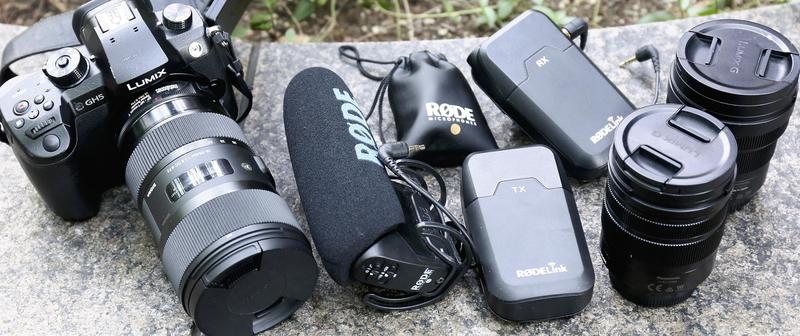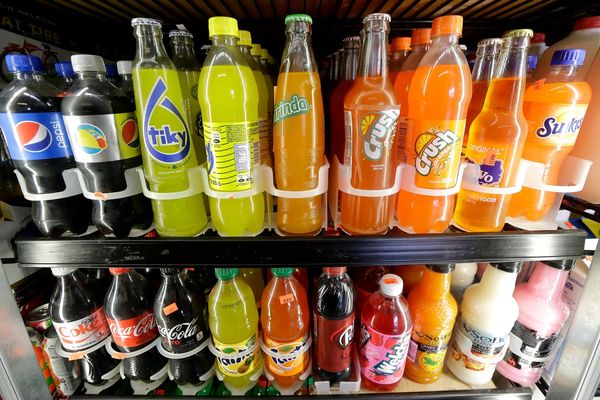
"Are you Chris Broad?"
He was, and he had just been stopped by a young Norwegian pair as he filmed the exterior of the Imperial Palace in central Tokyo in the early-summer sunshine.
Total strangers often stop this 29-year-old, originally from Maidstone, England, to say hello, and not just in Tokyo. He's also greeted in Kyoto, Hong Kong and London. Broad is a familiar face to people around the world via his YouTube channel "Abroad in Japan." From tourist attractions to bizarre discoveries in everyday life, he covers a wide range of topics involving Japan.

He has so far put up about 170 videos, earning a total of 139 million views since 2012.
"I find it hard to believe," Broad said during a recent interview with The Japan News in Tokyo. "Interestingly with YouTube, you spend a lot of time just in your apartment room filming yourself, or in the Japanese countryside somewhere, so I feel there's a disconnection between me and my viewers. I don't really appreciate how many people watch the videos."
Acting on the urge to live life "like a movie," Broad came to Japan in 2012. He began creating videos while teaching English in a high school in Sakata, Yamagata Prefecture.

"I thought this is a great chance to rediscover my hobby of making videos in an interesting and exciting place, and show friends and family back home," said the now full-time YouTuber.
His first video was set in his apartment, to show what it's like to sleep on a futon. "But they didn't really watch it. That was a shame," he said with a laugh.
But people across the globe who are interested in Japan discovered his creativity, gradually boosting the popularity of the channel. Broad now has about 1.27 million subscribers.

In summer 2017, he unexpectedly burst into the spotlight with "Being Rudely Awoken by a North Korean Missile," a video that shows the obviously annoyed Broad talking about the incident.
"Just two minutes of me going 'Oh, a missile!' led to such a big effect. Millions of people watching, I was in the news all around the world," Broad said about the impact of the video that spread on social media.
"Video gets through to people in a way that reading can't do. Video is a very powerful way of influencing people, sharing opinions, telling stories," he said. Viewers can comment, or contact Broad and give him their thoughts, and he spends a lot of time reading what they say.
"Each video feels like a party," he said. "The unique thing about YouTube is that viewers are participants, not just viewers. That's pretty exciting."
However, the power of the internet can also work in adverse ways, making Broad concerned about the impact of his works.
"You never know who's watching your video. Over the years I've become a lot more self-aware of what I say and what I do. I probably swear less," he said. "When you've got just 1,000 subscribers you can do anything you want, but when you've got 1 million it feels like there's more responsibility."
Among the abundant selection of videos available online that feature Japan, why do his works get more attention?
"There are many factors. No. 1 is the title. I think the title is quite catchy. You look at the title and think, 'Ooh, 12 things, what are the 12 things?'" Broad said, referring to "12 Things NOT to do in Japan" -- his most watched video with more than 11 million views since it was posted in December 2017.
"Then there's the thumbnail. If you look at the picture it looks quite provocative. It looks serious, like, 'What's happening?' I look angry or scared or something."
"On my videos, I'm more like a character. I'm more grumpy, angry, sarcastic, bitter. In real life I'm probably nicer. I like to be not nice in my videos. It's more entertaining I think -- British style," Broad said, chuckling.
This "character" may help grab viewers' attention and make him well known, but the real-life Broad cares about something else.
"I love the process of filmmaking. I didn't do vlogging to be famous. I don't really enjoy presenting the videos," he confessed. "Every video is like a project where I have to learn new things and push myself."
Broad usually spends a week or two on scripting, filming and editing a video. Editing like he's making "a low-budget television show," he normally shoots about 180 minutes of material for use in a roughly 15-minute travel video.
More focus on Tohoku region, people
Amid an array of versatile topics from Japan, his key aim remains firmly set: To get more foreign people to see "the real Japan." Broad has traveled across the country, and now has only four prefectures out of all 47 left to visit. Currently based in Miyagi Prefecture, he feels most strongly about the Tohoku region, which in his words is "Japan's best-kept secret" just waiting to be discovered.
"I spend a lot of time making videos about Tohoku trying to encourage people to come, see it and experience it. Leave Kyoto and Tokyo and come and see something new and different," Broad said, lamenting the fact that less than 2 percent of foreign tourists stay in the region.
Broad describes Yamagata Prefecture as a "magical" place. "On the weekend I could just get in a car and drive off to a rice field with mountains and nobody around, and I could just sit and think, and it was amazing. That's the sort of place I want foreigners to see, where they'll feel a real connection with Japan."
The Great East Japan Earthquake devastated the Tohoku region one year before Broad came to Japan.
"In the first two or three years that I did YouTube, I got a lot of comments from people saying [the nuclear incident in] Fukushima will kill everyone in Japan," he recalled. "That really annoyed me."
It prompted him to take action to "get rid of that image that Fukushima's this terrible, dangerous, scary place." Last year, he made "What Happened in Japan After the Tsunami," a documentary in which he interviewed people affected by the calamity to hear their stories. He plans to release another video featuring the good side of Fukushima later this year.
His eyes are set on creating more serious documentaries. "I'd like to do less travel and focus more on people and hearing people's stories. My long-term dream is to be a proper filmmaker producing things for television." He hopes to make his first short film in Japan.
A firm believer that every video he makes has to be "educational and entertaining," he said, "You don't need to know who I am, but hopefully you can still watch the video and learn something."
-- Quick Questions
Q: Describe your first impression of Japan.
A: Intense. Because I remember my first day -- I was in Shinjuku.
Q: What is your favorite Japanese saying or word?
A: Nekojita [which means "highly sensitive to hot foods and drinks"] as there's no equivalent in English.
Q: What is your favorite place?
A: Chokai no Mori park in Yamagata Prefecture. Whenever I was stressed I would go and sit there.
Q: What is your current passion or interest?
A: Nighttime photography and cyberpunk ... Japan is quite a futuristic country.
Read more from The Japan News at https://japannews.yomiuri.co.jp/







